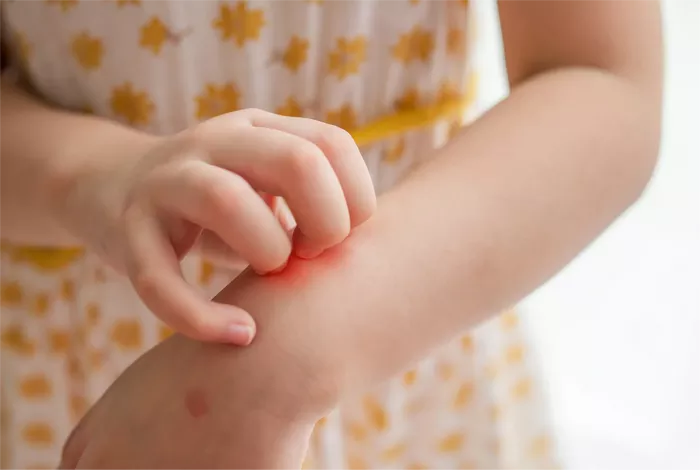Shingles, also known as herpes zoster, is a painful rash that can occur after a person has had chickenpox. This article explores how long shingles is contagious for chickenpox, how the virus spreads, and what precautions to take.
Understanding Shingles and Chickenpox
What is Chickenpox?
Chickenpox is a highly contagious viral infection caused by the varicella-zoster virus (VZV). It typically affects children but can occur in adults who have not had the infection. Symptoms include:
- Itchy rash with blisters
- Fever
- Fatigue
- Loss of appetite
What is Shingles?
Shingles occurs when the VZV reactivates in someone who has had chickenpox. It usually presents as a painful rash that develops on one side of the body. Symptoms include:
- A burning or tingling sensation
- Blisters that scab over
- Pain, which can be severe
How are Shingles and Chickenpox Related?
Both chickenpox and shingles are caused by the same virus. After a person recovers from chickenpox, the virus remains dormant in the nerve cells. Years later, it can reactivate as shingles, often triggered by stress, illness, or a weakened immune system.
How is Shingles Contagious?
Transmission of the Virus
Shingles is not directly contagious in the same way chickenpox is. However, a person with shingles can spread the virus to someone who has never had chickenpox or has not been vaccinated against it. This transmission can occur through direct contact with the shingles rash.
How the Virus Spreads
When the shingles rash is active, the virus can be transmitted to someone else. If that person has not had chickenpox, they can develop chickenpox. The virus is spread through:
- Direct contact with the fluid from the blisters
- Respiratory droplets from coughing or sneezing (less common)
When is Shingles Contagious?
A person with shingles is contagious from the time the rash appears until it has completely crusted over. This period usually lasts about 7 to 10 days.
Contagious Period for Chickenpox
Understanding the Timeline
Shingles Rash Appears: The person becomes contagious when the rash starts.
Rash Development: Blisters will form and eventually crust over.
Crusting Over: The contagious period ends when all the blisters have crusted over, usually within 7 to 10 days.
Key Points on Contagiousness
- Shingles cannot be spread through airborne transmission like chickenpox.
- It is essential to avoid direct contact with the rash.
- People with weakened immune systems, pregnant women who have never had chickenpox, and newborns are at higher risk.
Precautions to Take
For Those with Shingles
If you have shingles, it is important to take precautions to prevent spreading the virus. Here are some tips:
Stay Isolated: Stay away from vulnerable individuals, especially pregnant women and those who have not had chickenpox.
Cover the Rash: Keep the rash covered to minimize the risk of transmission.
Wash Hands Frequently: Good hygiene is crucial. Wash your hands often, especially after touching the rash.
For Those Who May Be Exposed
If you come into contact with someone who has shingles, consider the following:
Check Immunity: If you have had chickenpox or the varicella vaccine, you are less likely to contract the virus.
Monitor for Symptoms: Be aware of chickenpox symptoms. If they develop, seek medical advice promptly.
Who is at Risk?
High-Risk Groups
Certain individuals are more susceptible to contracting chickenpox from someone with shingles:
Unvaccinated Individuals: Those who have never had chickenpox are at risk.
Pregnant Women: Especially those without a history of chickenpox.
Immunocompromised Individuals: This includes people undergoing chemotherapy or with HIV/AIDS.
Complications of Shingles
While shingles can be painful, complications can arise:
Postherpetic Neuralgia
This is a common complication where pain persists in the area where the shingles rash was, long after it has healed. The pain can be severe and debilitating.
Other Complications
Skin Infections: If blisters become infected.
Vision Loss: If the shingles affects the eye.
Neurological Issues: In rare cases, shingles can lead to inflammation of the brain (encephalitis).
Prevention of Shingles and Chickenpox
Vaccination
Vaccination is the most effective way to prevent both chickenpox and shingles:
Varicella Vaccine: This vaccine is recommended for children and can prevent chickenpox.
Zoster Vaccine: This vaccine is recommended for adults aged 50 and older to reduce the risk of shingles.
Healthy Lifestyle Choices
Maintaining a healthy lifestyle can help strengthen the immune system:
Balanced Diet: Eat a variety of foods rich in vitamins and minerals.
Regular Exercise: Engage in regular physical activity.
Stress Management: Practice relaxation techniques to reduce stress.
Conclusion
Understanding how long shingles is contagious for chickenpox is crucial for preventing the spread of the virus. A person with shingles is contagious from the time the rash appears until all blisters have crusted over, usually about 7 to 10 days. Taking precautions can protect vulnerable individuals from contracting chickenpox. Vaccination remains the best defense against both chickenpox and shingles. If you suspect you have shingles or have been exposed, consult a healthcare provider for advice and potential treatment.
Related topics:
- Is Shingles Dangerous for Men? A Comprehensive Overview
- Is Shingles Dangerous for Pregnancy?
- Where Does Shingles Affect the Body?



























